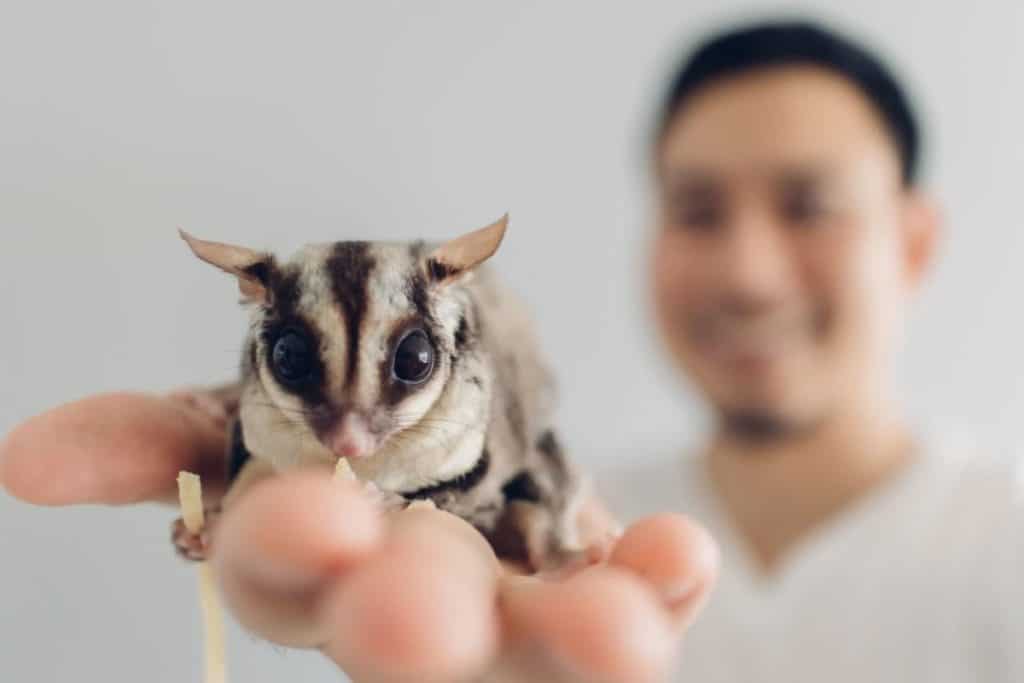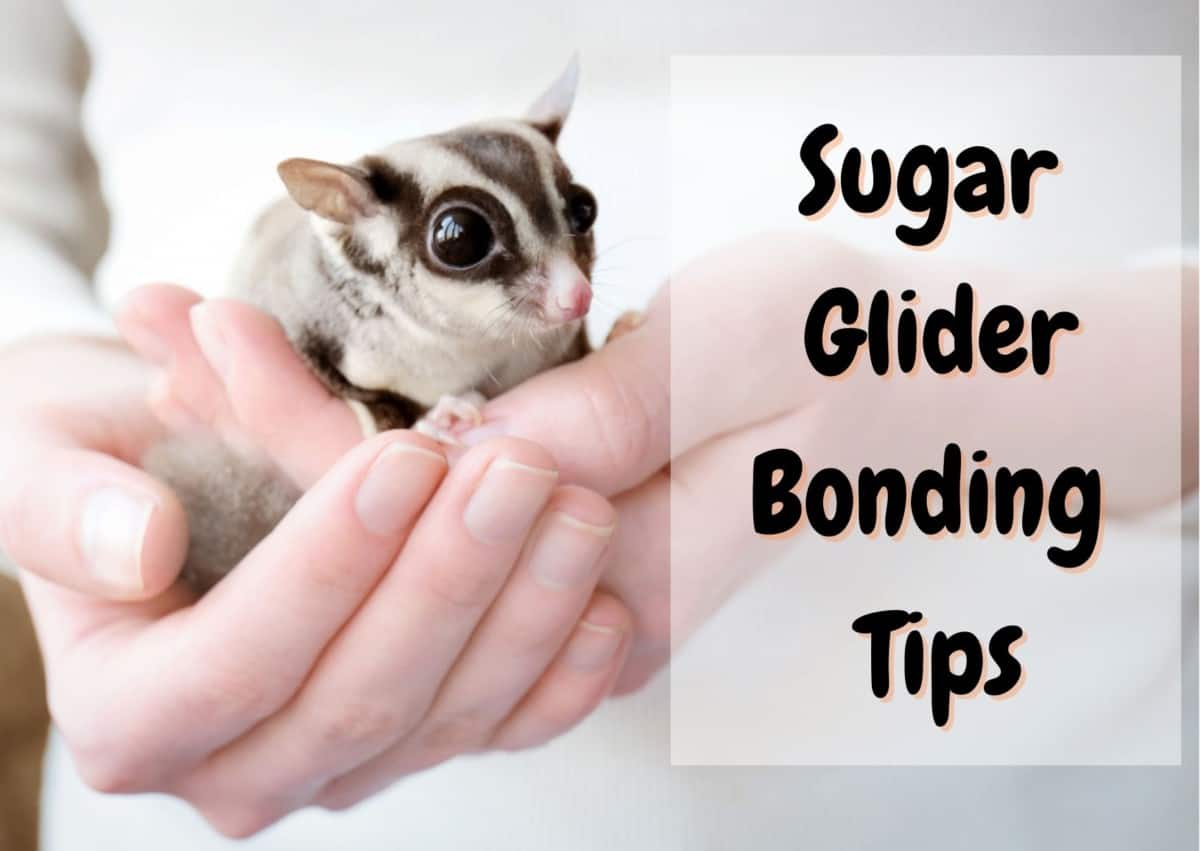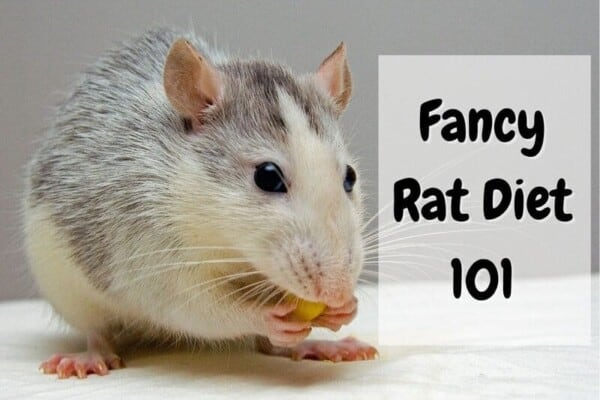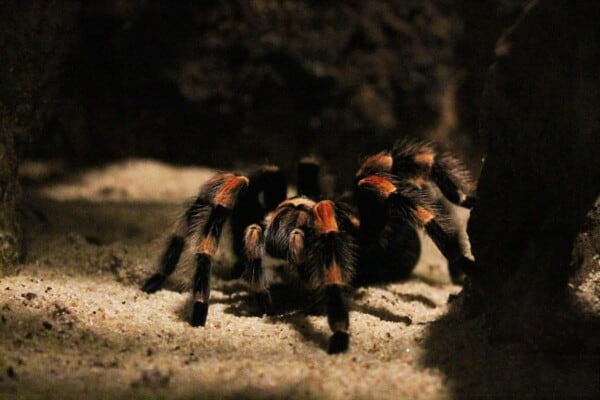As a first-time sugar glider owner, bonding with your little critter is quite an endearing experience. It may also be a challenging one. Like many exotic creatures, gliders have a wild side to them, which makes any attempts of connecting to humans pretty testing. So how do you bond with your sugar glider?
Here are the 5 steps of bonding with your sugar glider:
- STEP 1. Give them time to adapt to their new environment
- STEP 2. Get them used to your presence
- STEP 3. Reward them with treats
- STEP 4. Spend some time with them in a confined space
- STEP 5. use a pouch to carry them around you around the house.
As you read along, see how you can implement these tactics with your own sugar glider.
What does bonding with a sugar glider mean?
Sugar gliders have an ability to bond with their owner – in effect, to move from this “wild” state to a more “tame” disposition. Although, of course, they are still behaving like wild animals.
As marsupials, they nurture a need for bonding from birth. The bond starts when they nest inside their mother’s pouch and stay there for many weeks.
When adult life starts and a new owner takes over the mother’s role, the need for bonding still exists. This primary bond will transfer to their main caretaker. The bonding process takes time and effort and depends on each animal. Yet it is a rewarding feat to have the glider come to you freely and enjoy your company without having to hide away from you.
Why is bonding important?
Bonding is as important to the sugar glider as it is to you. It will help your critter thrive in its new environment. It will also make it easier for you to take care of your glider for tasks as simple as feeding your pet or carrying it to the vet. With no bonding in place, any such activities tend to be awkward.
What factors will make a Sugar Glider bond faster?
What makes a Sugar glider bond fast or not depends on several factors. To begin with, gliders have different personalities, and not all of them bond with the same intensity.
Also, time is a critical factor. Some will get used to their owner in just a few days, while it might take several months for another glider. This is something you have absolutely no way of knowing when you pick up your joey at the pet store or breeder.
Personality aside, it has been reported by many times by sugar glider owners that keeping several gliders together will help them bond more easily with humans. It helps them feel more secure and confident than if left alone.
A lonely sugar glider becomes easily sad and depressed. That anxiety generally transpires in a lack of interest in bonding with its human owner.
Do all sugar gliders bond?
While not all sugar gliders bond to the same degrees, all gliders bond to a certain extent. You will definitely notice a difference in behavior between the first encounter and a few months later.
The 5 stages of bonding with your sugar glider

Sugar glider bonding varies from one pet to the other, but it’s very rare when sugar gliders don’t bond at all with their new owners. Maybe the most important aspect is to be patient. In an ideal world, the pet would bond to you instantly, but a more realistic timeline would be a good few days to several weeks of quality time spent with your sugar glider.
1. The adaptation phase
When being introduced to their new environment, your sugar glider will naturally be scared and anxious. During this phase, refrain from touching your glider and make him feel comfortable by giving him plenty of space.
This way they can get used to their surroundings – their cage, the smells, and the noises around the house. This will lower their anxiety levels. During this phase, your glider might get scared when you come close to its habitat and will signify it by emitting a loud sound called crabbing.
2. Getting your sugar glider used to your presence
You will soon notice that they are not crabbing anymore when they see you. You can then move on to the second step and get them used to your presence and smell.
For instance, give them a piece of clothes you’ve been wearing overnight or place it on top of the cage, where their sleeping pouch is. You may also place a cloth or fleece square that you’ve put your scent on into their sleeping box.
Speaking in a soft tone when close to the cage will show them that you don’t mean any harm. Don’t try to pet them as yet. They will probably start crabbing as soon as you approach the cage too close for the first few days.
3. Rewarding your sugar glider with treats
You may get your glider used to your presence and associate it with something pleasant by putting some yogurt or honey on your hand or holding a treat and placing it inside the cage.
At this stage, it is quite unlikely that they will come and lick your hand or steal the treat. Still, they will understand that this giant hand means nothing but good things. Always be very gentle with your gestures and tones and give them a lot of space.
Your sugar gliders might start crabbing and hide every time you try to approach your hand. It is a normal reaction at the beginning so be persistent, calm, and gentle. With time the crabbing will decrease or stop altogether. Reward that sociable behavior with a treat.
In case they bite, do not punish bad behavior. They will not understand why they are being punished for being scared and this will delay the bonding process. Instead, a gentle hiss or soft blow of air will be sufficient. Within a few days, it should become easier to feed your glider with a treat without expecting any antisocial behavior.
4. Spending time with your sugar glider in a confined space
Your sugar glider will soon understand that you are here to take care of him so the bonding process will start to take place easily. The time has come to get your glider out of the cage and make them feel comfortable around you.
When taking them out of the cage for the first time, don’t try to grab, or squeeze them. They will feel threatened and it could delay the bonding process. Instead, put your hand in front of their legs so they can walk on it if they want to. It’s OK if they still need some time before they get out of their cage. As the real bonding process begins, patience, calmness, and persistence are key.
You will want to spend some time with your glider in a small, secure space. It could be a tent, a large closet, or a small bathroom. You may sit on the floor and wait for them to come to you as they wish. When they do, continue with the treat formula. Even when outside the cage, they will now want to come to you in hope of a reward.
This stage of bonding should be gradual. Start with a few minutes every day, and increase the time your glider spends with you outside the cage by a few minutes each time.
If possible, keep a routine of bonding and feeding around the same time. For instance, 7-9 pm at night, or a few minutes before you go to work in the morning. Gliders are creatures of habit and your gentle persistence will soon be rewarded.
5. Using the sleeping or bonding pouch
To fully bond with your sugar glider you will want to recreate the feeling your glider had when kept in the safety of its mother’s pouch. For this, you will need to use a bonding pouch.
Place the sleeping pouch on your lap or chest so they can get used to your voice and presence. Feeling secure in its pouch, your critter might start making popping sounds meaning that they feel happy and secure. As they do, you may start handing them treats.
Bonding pouches are specially designed to carry your glider around the way it was carried by its mother. Wear your bonding pouch around the neck and carry your glider while speaking and moving gently.
The first few minutes might be challenging for your critter, who may want to escape. For this reason, most bonding pouches have a little window so that the glider can see and breathe properly.
As an alternative you can nest your glider in a sports bra or by wearing two T-Shirts tucked in your pants. Place the glider in between the two, this will make them feel secure. This close contact with your body will also get them used to your scent.
Next, see if you can slip your hand inside the pouch without the glider crabbing at you. They might have a defensive reaction at first, but with time and patience, they should get used to it fast. You may also try to hold them in the palm of your hand as they sleep, which will enhance the bonding process.
Can I still bond with an older sugar glider?
Yes, an older sugar glider will still be able to bond with a new owner. However, If he was never handled or is not used to human presence, the bonding will be more challenging. More time and patience will be needed than with a younger glider.
As is the case for joeys, older sugar gliders each have their own personality. Age is not always the main factor as to whether your glider will bond or not. However, the younger the glider, the easier it will be for him to bond with its owner.
Final Words
It might take a little bit of time for your sugar glider to be used to you, and even more time for him to bond with you. These 5 tips should help you to get on with the bonding process and experience a natural relationship with your pocket pet.
While these techniques are effective, remember that time, patience, a gentle attitude, and understanding of your sugar glider’s behavior and personality will make for a better connection as the weeks and months go by.
Resources and further reading:













